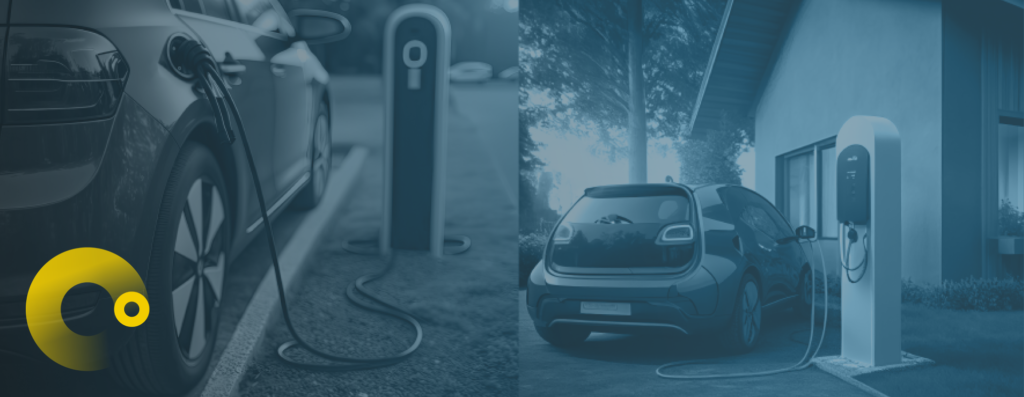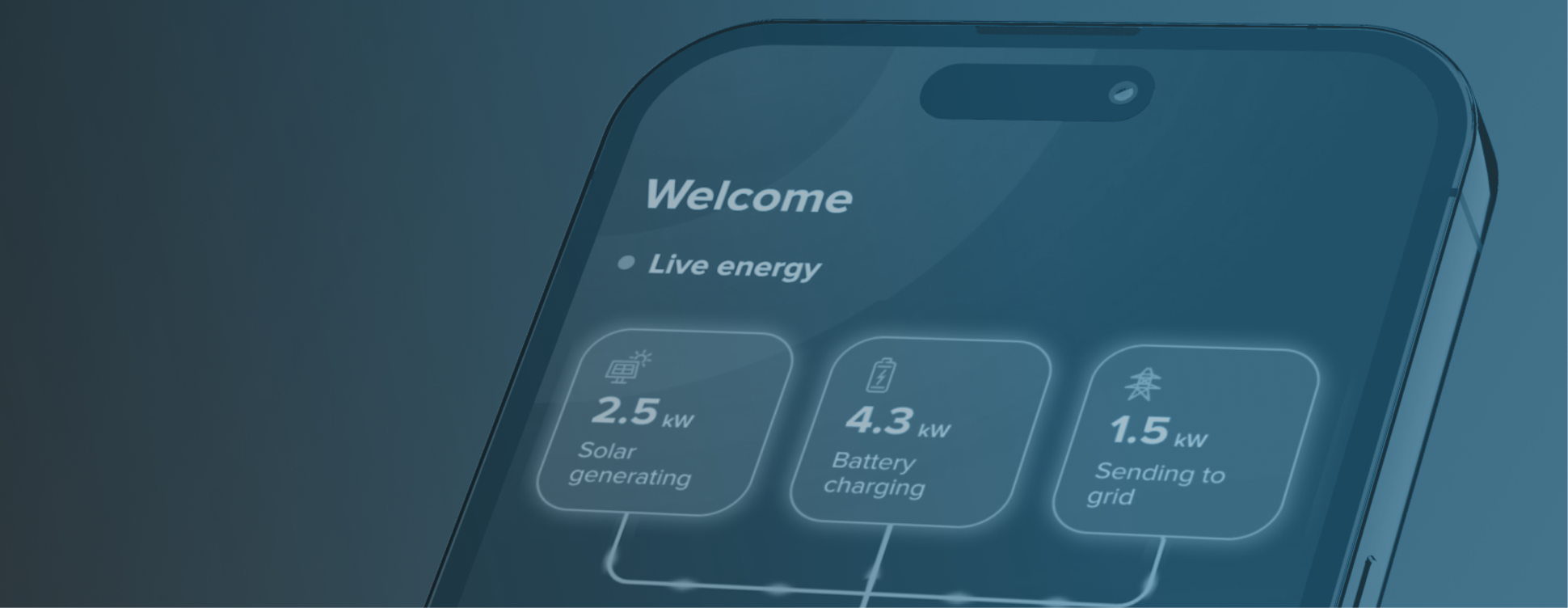As the ripples of change sweep across the automobile industry, electric vehicles (EVs) are fast becoming more than just a trend – they’re a statement of sustainable living. They offer substantial savings on fuel costs and significantly reduce carbon emissions. However, one pivotal question for any EV owner is: “How will I power my vehicle?” The answer shines brightly from above: solar energy.
Charging at home vs. public charging stations
While public EV charging stations are becoming more commonplace, the reality is that most EV charging occurs at home. Relying on the grid for EV charging can be costly, and for those looking to reduce their carbon footprint it may feel counterintuitive when your ‘green’ vehicle is powered by fossil fuels.
To truly capitalize on the environmental benefits of your EV, charging it with solar energy is the key. It provides the flexibility to charge your vehicle without being beholden to the fluctuating costs of grid electricity – and most importantly, it ensures your ride is powered by clean, renewable energy.

The Solar-EV synergy
The good news is that, with a properly sized rooftop solar system, your EV daily drive could be powered by the sun. Let’s break down the figures to clarify the solar potential for charging your EV.
Studies have shown that the average Australian vehicle covers about ~12,000km per year, or 33 km daily. Electric SUVs, which are among the most popular EVs, have an energy consumption ranging between 17 kWh/100 km and 22 kWh/100 km. For our purposes let’s use the average of 19.5kWh/100km (0.195kWh/km).
Now lets do some maths to calculate the amount of solar power you’d need to cover the daily commute in your EV
Step 1: Calculate the number of kWh of electricity to travel one kilometer in your EV.
Battery capacity ÷ EV range = kWh/kmIn our example we have taken the average kWh/km of 0.195. I.e. It takes 0.195 kilowatt hours of electricity to travel one kilometre in the average EV. To find out the specific number for your particular model, simply do the calculation above.
Step 2: Calculate the total kWh per day to cover your daily commute
Calculation: (Kilometres/day) x (kWh/km) = Total kWh per day
For the purposes of the maths, let’s use an average driving distance here. The average annual Australian commute is roughly 12,000 km or 33 km per day. 33 km/day*0.195 kWh/km = 6.435 kWh per day.
This shows it takes approximately 6.435 kilowatt hours of electricity to complete the average daily commute of 33km.
Step 3: Solar system size needed to cover your daily commute
Calculation: kWh/day ÷ sunlight hours/day = Solar system size, kW
Continuing our maths journey. Assuming 4 sunlight hours per day, this means that you need 1.6 kWh of extra solar generation per day to cover your daily commute.
6.435 kWh/day * 4 sunlight hours = 1.609 kW panels
This shows you’d need an extra 1.6kW of solar panels installed to cover the daily commute.
Step 4. Calculate the number of extra solar panels needed to generate this electricity
Taking a common size 415kW solar panel this means you need an extra 4 panels to account for the 1.6kWh (1,600kW) extra power you need to charge your EV for your daily commute.
1600kW ÷ 415kW = 4 extra 415 kW panels needed (rounded up from 3.855)
Step 5: Account for conversion losses
There is a big assumption above that your solar panel system is 100% efficient. This is never the case, you always have some efficiency losses in the process of converting the power generated by your panels to usable electricity for your home or vehicle.
To get a truer reflection of the number of panels required, it would make sense to factor in an efficiency loss. For our example let’s use 20% losses. This means that it would be advisable to upsize the panel system by 20% to account for these losses.
So lets add 20% to our 1.6kWh system (1.6kWh * 20% = 1.92kWh).
Lets redo the calculation to see how many panels you would actually need: 1,920 kW ÷ 415kW = 4.627 panels
Therefore accounting for efficiency losses you’d in actual fact want to add an additional 5 panels.
How to charge your EV with a residential battery
The calculations above assume that you are able to charge your vehicle during daytime hours. You are also making an assumption that you are only charging your EV during the daytime. This is probably not the case and so the question arises about how a solar battery could help with your EV charging.
Say you only charge your EV during the daytime for a total of 3 days spread out across the week, that means you are effectively only charging it with your solar panels 156 days a year. This equates to ~1,010kWh (6.435kWh x 157 days).
To make up the shortfall you’d need to use power from your battery the other 209 days of the year. That equates to ~1,350kWh needed from your battery (6.435kWh per day x 209 days). This means that you’ll have to upsize or add an additional battery module to account for charging your daily drive with a combination of panel and battery power.
The size of battery you’ll need will of course vary depending on whether you are driving more or less than the average Australian every day. With the above daily commute distance, adding an extra 10kWh of battery storage could provide ample enough energy to allow you to run your EV on solar power from your battery for your daily commute and have a little left over to spare.
Understanding your driving and charging habits is key to sizing your solar system to supply enough energy for your EV.
Going Solar with Your EV
If you’re on the brink of purchasing an EV and haven’t yet invested in solar energy, it’s wise to consider both simultaneously. The increase in your home’s energy consumption from charging your EV can be offset by a solar installation, ensuring that your costs remain low and your environmental impact even lower.
For those who already own an EV, integrating solar power could significantly reduce running costs and enhance the sustainability of your transport. And for future EV owners, exploring solar options now could streamline your transition to fully renewable energy consumption.

Conclusion
Powering your EV with solar is more than just a practical choice; it’s a commitment to a cleaner, greener future. For our solar retail partners, this represents an unparalleled opportunity to deliver comprehensive, future-proof solutions to customers. By providing the tools to harness the power of the sun for their EVs, you’re not just selling solar panels – you’re selling independence, sustainability, and innovation.
Consider the journey towards a solar-powered EV as an investment in tomorrow. Encourage your customers to be pioneers in this new era of transportation, powered by the most reliable source of energy we have – the sun.
Contact us for affordable wholesale pricing on panels, inverters, and batteries and create the packages your EV customers need to power their daily drive.
The information provided on this blog is for general informational purposes only. We make no representations or warranties of any kind, express or implied, about the completeness, accuracy, reliability, suitability or availability with respect to the blog or the information, products, services, or related graphics contained on the blog for any purpose. Through this blog, you may be able to link to other websites that are not under our control. We have no control over the nature, content, and availability of those sites. The inclusion of any links does not necessarily imply a recommendation or endorse the views expressed within them.














